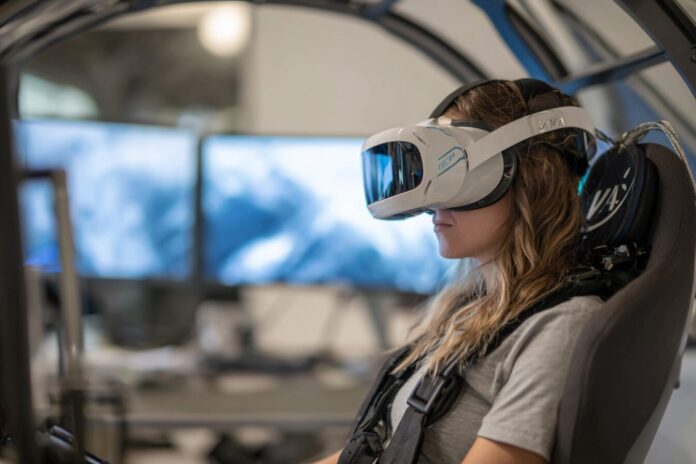Pioneering Comfort in the Skies of Tomorrow
The vision of city skies dotted with air taxis that shuttle commuters is fast becoming a reality. Most importantly, NASA is at the forefront of the Advanced Air Mobility (AAM) mission, ensuring that the journey isn’t just fast but also supremely comfortable. Because passenger comfort is key to widespread public acceptance, every aspect of the ride is under scrutiny.
In order to foster public confidence, NASA’s investigations integrate advanced engineering with human-centric design principles. Therefore, researchers are not only developing new technologies but are also rethinking air taxi design to address real passenger concerns. This dual focus is essential as the skies transition from future fantasies to everyday urban travel options.
Understanding Passenger Expectations: The Core of NASA’s Research
Because public acceptance hinges on positive experiences, NASA’s research teams are diving deep into what makes an air taxi ride enjoyable—or simply tolerable. Researchers at NASA Armstrong, working in state-of-the-art labs like the Ride Quality Laboratory, harness data from Human Vibration Labs and Vertical Motion Simulators at NASA Ames. These facilities replicate the unique dynamics of air taxi movements, offering insights into every jolt and smoother maneuver.
Most importantly, volunteer passengers participate actively in these studies, sharing insights that are vital for refining ride systems. The process is iterative: every simulation informs the next stage of design improvements. By translating subjective feedback into tangible data points, NASA ensures that every design decision makes the ride safer and more enjoyable. For more detailed information, visit the official NASA Armstrong page.
Simulating the Future: Virtual Air Taxi Rides
Recently, NASA conducted a groundbreaking study where employees participated in virtual air taxi flights. These simulations were designed to mimic real-world conditions, incorporating sudden lifts, drops, and quick maneuvers that may be encountered during an actual flight. Because these controlled environments can exact a full range of motion scenarios, they provide a robust basis for gauging passenger response.
Moreover, each test session lasted approximately 15 minutes, during which participants were asked to rate their comfort. Transitioning between various flight conditions, the individuals noted specific moments that were particularly jarring. Therefore, the gathered feedback is not just anecdotal but forms a comprehensive dataset that feeds directly into design improvements. For further insights, check out the detailed study on NASA’s technical documentation.
Key Findings: What Makes a Ride Comfortable?
NASA’s research reveals that certain motion characteristics, particularly peak heave acceleration and jerk, are critical in evaluating ride comfort. Because abrupt vertical movements can trigger discomfort, the study meticulously quantifies these variables to establish thresholds that are acceptable for everyday flights. Most importantly, these findings help set the early design guidelines for future air taxi models.
Besides that, continuous data collection has shown that repeated exposure to minor disturbances can have a cumulative effect on passenger comfort. Therefore, it is essential that designers pay close attention to even the smallest variations in ride dynamics. This approach not only minimizes passenger stress but also builds trust in an emerging technology that will soon serve urban populations.
Broader Impacts: Building an Industry on Trust and Enjoyment
Beyond the realm of engineering, NASA’s studies have broader implications for the burgeoning air taxi industry. Because trust is the foundation of any new mode of transportation, the transparency in publishing research and comfort data helps build public confidence. Curt Hanson, a senior flight controls researcher at NASA, emphasized that sustainable industry growth depends on ensuring that the ride experience is both enjoyable and safe.
Therefore, informed by rigorous comfort evaluations and real user feedback, manufacturers can fine-tune systems to meet strict comfort criteria from the outset. Most importantly, these proactive measures will guard against adverse public perceptions at launch and ensure long-term customer satisfaction. This research reinforces the fact that advanced air mobility is not just about technology, but also about the human experience. Learn more about the latest updates at the Space Launch Schedule portal.
From Lab Insights to Everyday Skies
As the AAM initiative accelerates, the insights from NASA’s labs are increasingly influencing the design of tomorrow’s air taxis. Because each experiment directly translates into design adjustments, there is a clear path from laboratory findings to real-world applications. These studies are setting robust standards that the industry can follow to ensure uniform safety and comfort across all air taxi models.
Moreover, NASA’s ongoing research continues to bridge the gap between theoretical comfort models and the practical requirements of daily urban travel. Transitioning from simulation to reality, every test propels us closer to an era where air taxis become an everyday mode of transportation. For more on this transformative journey, visit the Advanced Air Mobility Mission portal.
What Comes Next?
The collaboration between public and private sectors is expanding rapidly. Because this partnership accelerates innovation, future developments in air taxi design are expected to feature even more sophisticated comfort assessments, integrated directly with urban infrastructure planning. Most importantly, this combined effort ensures that the city of the future will not only move faster but also more comfortably.
Additionally, industry stakeholders are poised to benefit from NASA’s transparency and proactive research methodologies. Therefore, as we anticipate the next generation of air taxis, it is clear that these vehicles will redefine convenience without compromising on passenger comfort. To keep abreast of these developments, interested parties should regularly check the NASA Armstrong page and related NASA mission updates.
References
- NASA Air Taxi Passenger Comfort Studies Move Forward
- Urban Air Mobility Passenger Discount Evaluations of Sudden Heave Motion in a Virtual Reality Motion-Base Simulator
- Space Launch Schedule: NASA Air Taxi Passenger Comfort Studies Move Forward
- NASA’s Advanced Air Mobility Mission
- NASA Advances Air Taxi Passenger Comfort Studies – YouTube



